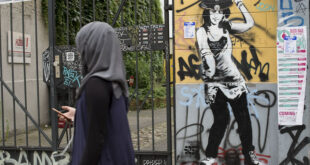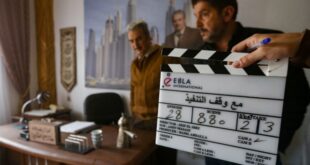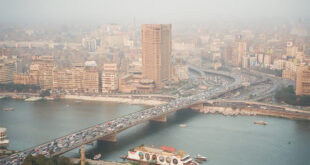Reviewed by Ralph D. Berenger, The American University in Cairo
Mellor, Noha. The Making of Arab News. Oxford: Rowman & Littlefield, 2005. 176 pages. Paperback, 0-7425-3819-2, $23.95; Hard cover 0-7425-3818-4, $69.
International scholars are often puzzled by the way translations of Arab news stories, printed and broadcast, are constructed and organized. The same scholars are confused over the definition of objective reporting, which to the Western mind often seems just the opposite of what Arabic reporters practice despite their insistence that they hold objectivity as an important news value. Thank goodness someone like Noha Mellor is around to clear us a path.
Mellor, a hybrid journalist-cum-academic-cum-journalist in Copenhagen, has done some serious work here that is highly readable.
The Making of Arab News rides the crest of Western interest in Arab mass media and is an indispensable resource for working journalists and scholars seeking to understand the world of Arab journalism.
The author traces the origin of journalistic practices -- in the Middle East and the West --, questions existing Western theories and concepts of the Arab press, and provides readers with an invaluable alternative to currently accepted ideas of why Arab journalists do what they do.
In Part 1 of the book (four short chapters), the author analyzes similarities and differences between Arab and Western news construction and organization, and delves into levels of objectivity, political implications, public opinion, war coverage, and how American-style news formats have influenced Arab news coverage. However, Mellor is quick to point out that the Arab world is neither monolithic culturally nor linguistically, which the US seems not to understand when it tries pan-Arabic broadcasting experiments like Radio Sawa and Alhurra TV.
Students will find her comparativist approach to Western and Arab media development not only interesting but also critical to their understanding media systems in those spheres.
A short history of Arab journalism offers readers a road map they can follow to see how broadcast journalists, for example, have developed their own styles of delivery and story order. It also revisits William Rugh's taxonomy (see review in TBS 12), and takes issue with some ways the ambassador classifies media in various countries. For example, Mellor says the impact of foreign-licensed pan-Arab media, primarily magazines, are changing the way traditional print media is developing; and international and transnational broadcasting are having an impact on local media as well. Both issues receive only minor treatment in Rugh's 2003 book, and he "does not directly account for the role this type of press plays in public opinion…" (p. 61).
In Part II of the book (three chapters), which in the main is very strong and very interesting for bilingual Arab students, she goes into great detail about the development of Modern Standard Arabic (MSA) and how languages throughout the Middle East are becoming bifurcated or even trifurcated by the reality of a vernacular language used every day, MSA in the media, and the Classical Arabic spoken in the mosques as the language of the Koran. She calls this a diglossia or a triglossia. Young students, she says, favor English and vernacular Arabic languages over either MSA or Classical Arabic, because the former are "living languages" that are constantly changing in form and meaning.
In a particularly thought-provoking section, Mellor compares Arab story construction with the way Western journalists-and Arab students studying journalism at the proliferating Americanized universities throughout the Middle East-learn how to construct news stories, which is often through the summary lead (the 5w's and h) within the classic inverted pyramid organization. Arab journalists traditionally have not communicated that way -- in print or broadcast media -- though they are learning to do so since international print and broadcast media are ubiquitous in the region. Classic Arab journalists in the Middle East's golden era of journalism -- who, we learn from Mellor's book, were mostly trained at Cairo's Al Azhar, the world's oldest university -- used different forms, either a "right up pyramid" or a "step pyramid"-that more closely resembles the story telling narrative form (p.128-129).
A section discusses the differences between Arab and Western news values (p.97), which is helpful to both Arab and Western audiences who view transnational news programs and wonder how stories are selected.
Of particular interest to Arabic-speaking students are the examples, written in MSA and then translated into English, that illustrate the difference. This aspect of Mellor's book, the actually usage of Arabic to illustrate the point, is invaluable for instructors of Arab students whose own Arabic might not be up to snuff. However, there is not so much of it that it turns off monolingual students.
The book's major shortcoming is its lack of an index. Researchers will be frustrated in trying to quickly locate material and concepts inside this edition, albeit a thin tome that is fairly well organized into seven chapters. An alphabetical index would be an invaluable addition to subsequent printings.
Noha Mellor lectures in Arabic language and media at the Institute of Middle East Studies, University of Copenhagen, combining research and teaching while working as a journalist.
 Arab Media & Society The Arab Media Hub
Arab Media & Society The Arab Media Hub





